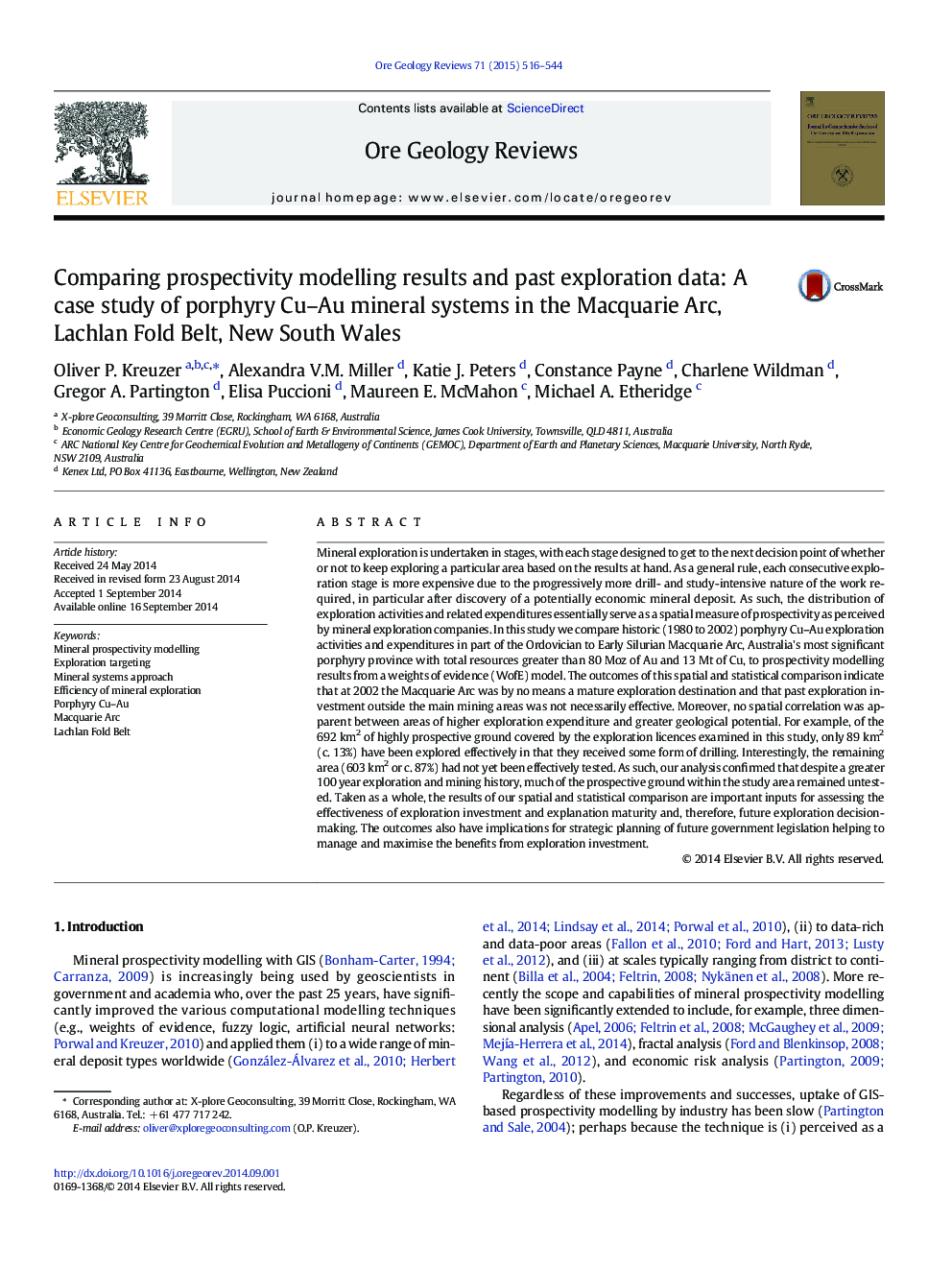| کد مقاله | کد نشریه | سال انتشار | مقاله انگلیسی | نسخه تمام متن |
|---|---|---|---|---|
| 4697036 | 1637233 | 2015 | 29 صفحه PDF | دانلود رایگان |

• We compare a prospectivity map to a map of exploration expenditures.
• Our quantitative assessment reveals inefficient allocation of exploration expenditure.
• Explorers were generally reluctant to drill.
• Most exploration licences never progressed to the next stage of exploration.
• Study has implications for future action and planning by industry and government.
Mineral exploration is undertaken in stages, with each stage designed to get to the next decision point of whether or not to keep exploring a particular area based on the results at hand. As a general rule, each consecutive exploration stage is more expensive due to the progressively more drill- and study-intensive nature of the work required, in particular after discovery of a potentially economic mineral deposit. As such, the distribution of exploration activities and related expenditures essentially serve as a spatial measure of prospectivity as perceived by mineral exploration companies. In this study we compare historic (1980 to 2002) porphyry Cu–Au exploration activities and expenditures in part of the Ordovician to Early Silurian Macquarie Arc, Australia's most significant porphyry province with total resources greater than 80 Moz of Au and 13 Mt of Cu, to prospectivity modelling results from a weights of evidence (WofE) model. The outcomes of this spatial and statistical comparison indicate that at 2002 the Macquarie Arc was by no means a mature exploration destination and that past exploration investment outside the main mining areas was not necessarily effective. Moreover, no spatial correlation was apparent between areas of higher exploration expenditure and greater geological potential. For example, of the 692 km2 of highly prospective ground covered by the exploration licences examined in this study, only 89 km2 (c. 13%) have been explored effectively in that they received some form of drilling. Interestingly, the remaining area (603 km2 or c. 87%) had not yet been effectively tested. As such, our analysis confirmed that despite a greater 100 year exploration and mining history, much of the prospective ground within the study area remained untested. Taken as a whole, the results of our spatial and statistical comparison are important inputs for assessing the effectiveness of exploration investment and explanation maturity and, therefore, future exploration decision-making. The outcomes also have implications for strategic planning of future government legislation helping to manage and maximise the benefits from exploration investment.
Journal: Ore Geology Reviews - Volume 71, December 2015, Pages 516–544